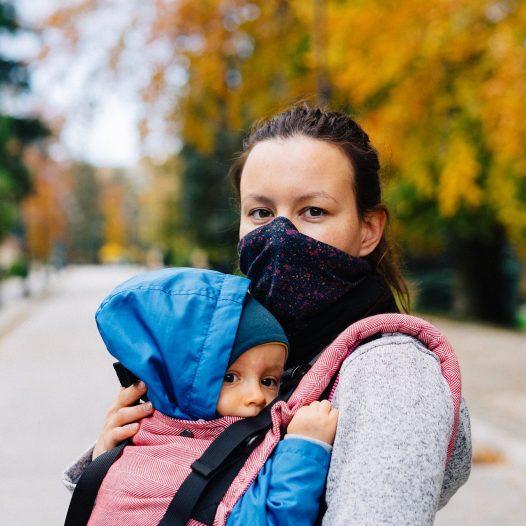Post-Acute COVID Syndrome
The Centers for Disease Control and Prevention (CDC) estimates that more than 114 million Americans had been infected with COVID-19 through March 2021. Factoring in new infections in unvaccinated people, we can conservatively expect more than 15 million cases of long COVID resulting from this pandemic. And though data are still emerging, the average age of patients with long COVID is about 40, which means that the majority are in their prime working years. Given these demographics, long COVID is likely to impact both our health care system and economic recovery.
Most people who have COVID-19 recover completely within a few weeks. But some people — even those who had mild versions of the disease — continue to experience symptoms after their initial recovery.
These people sometimes describe themselves as “long haulers” and the conditions have been called post-COVID-19 syndrome or “long COVID-19.”
They’re generally considered to be effects of COVID-19 that persist for more than four weeks after you’ve been diagnosed with the COVID-19 virus. The whole cluster of long-term COVID symptoms——has been named post-acute sequelae of COVID infection (PASC).
Research suggests that 50 to 80 percent of people who recover from COVID-19 experience at least some lingering after-effects 3 months after infection with the coronavirus. The numbers are higher in people who required hospitalization.
Long-term symptoms
The most common long-term symptoms include: shortness of breath, fatigue, weakness, headaches, “brain fog” (reduced attention or memory), anxiety, and depression.
Common signs and symptoms that linger over time include:
- Fatigue
- Shortness of breath or difficulty breathing
- Cough
- Joint pain
- Chest pain
- Memory, concentration or sleep problems
- Muscle pain or headache
- Fast or pounding heartbeat
- Loss of smell or taste
- Depression or anxiety
- Fever
- Dizziness when you stand
- Worsened symptoms after physical or mental activities
A study published in June in the journal Nature Medicine looked at about 300 patients in Bergen, Norway—almost all of the patients diagnosed in the city during several months in 2020. Six months after their initial diagnosis, 61 % of the group had persistent symptoms. The most common problem was fatigue, followed by difficulty concentrating, disturbed smell or taste, memory trouble and difficulty breathing. Many of these patients were younger, aged 16 to 30, and initially had only a mild or moderate case of COVID.
Another study, published in February in the journal JAMA Network Open by researchers at the University of Washington, suggests that around 30% of COVID patients may experience ongoing problems that range in severity—such as fatigue, loss of taste or smell, and trouble breathing—at least four weeks after they no longer test positive for the infection. Some people reported symptoms months later.
In April the U.S. Centers for Disease Control and Prevention’s Morbidity and Mortality Weekly Report found that 69 % of non-hospitalized adult COVID patients in Georgia had one or more outpatient visits 28 to 180 days after their diagnosis, and many of these people had symptoms potentially related to the original disease.
Organ damage caused by COVID-19
Although COVID-19 is seen as a disease that primarily affects the lungs, it can damage many other organs as well. This organ damage may increase the risk of long-term health problems. Organs that may be affected by COVID-19 include:
- Heart. Imaging tests taken months after recovery from COVID-19 have shown lasting damage to the heart muscle, even in people who experienced only mild COVID-19 symptoms. This may increase the risk of heart failure or other heart complications in the future.
- Lungs. The type of pneumonia often associated with COVID-19 can cause long-standing damage to the tiny air sacs (alveoli) in the lungs. The resulting scar tissue can lead to long-term breathing problems.
- Brain. Even in young people, COVID-19 can cause strokes, seizures and Guillain-Barre syndrome — a condition that causes temporary paralysis. COVID-19 may also increase the risk of developing Parkinson’s disease and Alzheimer’s disease.
Blood clots and blood vessel problems
COVID-19 can make blood cells more likely to clump up and form clots. While large clots can cause heart attacks and strokes, much of the heart damage caused by COVID-19 is believed to stem from very small clots that block tiny blood vessels (capillaries) in the heart muscle.
Other parts of the body affected by blood clots include the lungs, legs, liver and kidneys. COVID-19 can also weaken blood vessels and cause them to leak, which contributes to potentially long-lasting problems with the liver and kidneys.
Problems with mood and fatigue
People who have severe symptoms of COVID-19 often must be treated in a hospital’s intensive care unit, with mechanical assistance such as ventilators to breathe. Simply surviving this experience can make a person more likely to later develop post-traumatic stress syndrome, depression, and anxiety.
Because it’s difficult to predict long-term outcomes from the new COVID-19 virus, scientists are looking at the long-term effects seen in related viruses, such as the virus that causes severe acute respiratory syndrome (SARS).
Many people who have recovered from SARS have gone on to develop chronic fatigue syndrome, a complex disorder characterized by extreme fatigue that worsens with physical or mental activity but doesn’t improve with rest. The same may be true for people who have had COVID-19.
Many long-term COVID-19 effects still unknown
Much is still unknown about how COVID-19 will affect people over time, but research is ongoing. Researchers recommend that doctors closely monitor people who have had COVID-19 to see how their organs are functioning after recovery.
What to Do?
Preventing COVID-19 infection by receiving the vaccine is key to avoiding long COVID.
Health care practitioners recommend people with long-term effects try to get adequate sleep and exercise as much as their body would allow. Resources on our web page.
Many large medical centers are opening specialized clinics to provide care for people who have persistent symptoms or related illnesses after they recover from COVID-19. Support groups are available as well. Resources on our web page.
It’s important to remember that most people who have COVID-19 recover quickly. But the potentially long-lasting problems from COVID-19 make it even more important to reduce the spread of COVID-19 by following precautions. Precautions include wearing masks, social distancing, avoiding crowds, getting a vaccine, and keeping hands clean. Prevention of a problem will trump treatment of a problem every time.
References
- Blomberg, B., Mohn, K.GI., Brokstad, K.A. et al. Long COVID in a prospective cohort of home-isolated patients. Nat Med (2021). https://doi.org/10.1038/s41591-021-01433-3 https://rdcu.be/ctWRE
- Logue JK, Franko NM, McCulloch DJ, et al. Sequelae in Adults at 6 Months After COVID-19 Infection. JAMA Netw Open. 2021;4(2):e210830. doi:10.1001/jamanetworkopen.2021.0830
- COVID-19 Resource Center: https://jamanetwork.com/journals/jama/pages/coronavirus-alert
- Hernandez-Romieu AC, Leung S, Mbanya A, et al. Health Care Utilization and Clinical Characteristics of Nonhospitalized Adults in an Integrated Health Care System 28–180 Days After COVID-19 Diagnosis — Georgia, May 2020–March 2021. MMWR Morb Mortal Wkly Rep 2021;70:644-650. DOI: http://dx.doi.org/10.15585/mmwr.mm7017e3external icon.
Resources
- Survivor Corps is one of the largest and fastest growing grassroots movements connecting, supporting, educating, motivating, and mobilizing COVID-19 Survivors to support all medical, scientific and academic research, to help stem the tide of this pandemic and assist in the national recovery. https://www.survivorcorps.com/
- Long COVID FAQs: https://www.survivorcorps.com/long-covid-faqs
- How To Manage Post-Viral Fatigue after COVID, a guide by the Royal College of Occupational Therapists
- ME Action’s Pacing and Management Guide
- Recovery from Chronic Fatigue Syndrome, an online book by Bruce Campbell
- Purely Pacing, a short letter by Jennie Jacques, an Open Medicine Foundation ambassador
- Indefinitely Ill–Post-COVID Fatigue, a letter from person with ME/CFS on listening to your body
- a long read, but members of the Body Politic COVID-19 Support Group said this essay changed their life
- Q & A: Pacing for Chronic Illness and I Did A Pacing Master Class, blog posts from Natasha Lipman, BBC reporter and blogger with ME/CFS
- COVID-19 Resource Center: https://jamanetwork.com/journals/jama/pages/coronavirus-alert
Noticing Karl

“I want to write about Karl. It’s because Karl deserves to be noticed. Every hospital has a Karl.”
Charlie read an excerpt from an essay published in the LA Times titled “That guy who collected the COVID dead? It was Karl” by Dr. Courtney Martin. You can read the full essay here.
Thank you to all the Karls our there – the unnoticed people quietly making a difference. We appreciate you!
Recipe of the Week
This week we talked about Halva (which means “sweetmeat” in Arabic) and recipes for halva vary across the Middle East, Central Asia, and India. On her blog Turmeric and Saffron, Persian chef Azita Mehran describes the process of making and sharing funeral halva as “both therapeutic and somewhat healing.” Mehran’s version includes rose water, itself a venerated funeral food that is sprinkled over graves.

/fae9e3f4-7608-49bf-9cb3-1218971f6d9e--2018-0928_funeral-halva_3x2_julia-gartland_290.jpeg)
You can get the recipe here:
- Funeral Halva (with rose water) – Halva for All Occasions (Turmeric and Saffron)
- Funeral Halva (no rose water) – Food52








